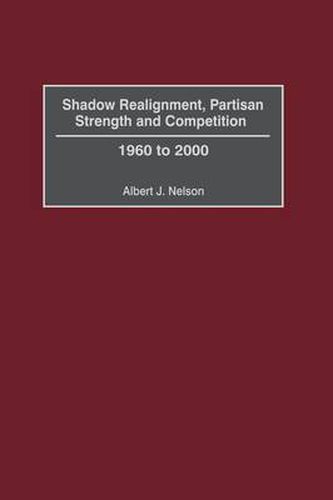Readings Newsletter
Become a Readings Member to make your shopping experience even easier.
Sign in or sign up for free!
You’re not far away from qualifying for FREE standard shipping within Australia
You’ve qualified for FREE standard shipping within Australia
The cart is loading…






Challenging the argument that party cycles no longer exist, Nelson reconstructs party strength indices associated with national and state Democratic electoral outcomes between 1960 and 2000. Four periods are distinguishable, Democratic Liberalism of 1960-68, De-alignment between 1968-1984, the Shadow realignment during 1985 - 1992, and the conservative consolidation between 1993 - 2000. During each of these periods party competition increased and Republicans gained ground, setting the groundwork for the GOP’s national and local success in the 2000 elections. The variable effects of the South, proportion of foreign-born population, and population change in each state on contemporary party strength and presidential elections from 1980 to 2000 are also explained. Students and scholars interested in political parties, American Government, and state and local government will find Nelson’s findings compelling.
$9.00 standard shipping within Australia
FREE standard shipping within Australia for orders over $100.00
Express & International shipping calculated at checkout
Challenging the argument that party cycles no longer exist, Nelson reconstructs party strength indices associated with national and state Democratic electoral outcomes between 1960 and 2000. Four periods are distinguishable, Democratic Liberalism of 1960-68, De-alignment between 1968-1984, the Shadow realignment during 1985 - 1992, and the conservative consolidation between 1993 - 2000. During each of these periods party competition increased and Republicans gained ground, setting the groundwork for the GOP’s national and local success in the 2000 elections. The variable effects of the South, proportion of foreign-born population, and population change in each state on contemporary party strength and presidential elections from 1980 to 2000 are also explained. Students and scholars interested in political parties, American Government, and state and local government will find Nelson’s findings compelling.